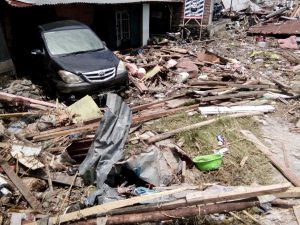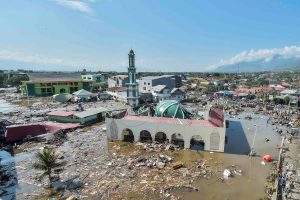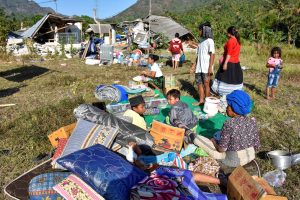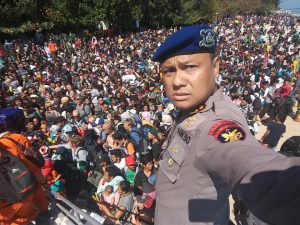
By Rozanna Latiff
PALU, Indonesia (Reuters) – Indonesia on Thursday extended for a day the search for victims of a 7.5 magnitude quake and tsunami on Sulawesi island at the request of relatives of the many still missing, the national disaster mitigation agency said.
Some 10,000 rescuers toiled on what would have been the final day of searching the ruins of the seaside city of Palu, hit on Sept. 28 by the double disaster, as relatives hoped their loved ones could be found and given a proper burial.
But a spokesman for the disaster agency told a briefing in Jakarta the search would go on until Friday evening.
The official death toll was raised to 2,073. No one knows how many people have yet to be found in Palu’s ruined neighborhoods but it could be as many as 5,000, the disaster agency says.
If any reminder were needed of Indonesia’s treacherous tectonics, a magnitude 6 quake struck off Java and Bali islands early on Thursday, killing three people in Java, damaging buildings and sparking panic.
The annual meetings of the International Monetary Fund and World Bank are being held this week on Bali and attended by more than 19,000 delegates and other guests, including ministers, central bank heads and some country leaders.
In Palu, on the west coast of Sulawesi, hundreds of kilometers northeast of Bali, survivors waited for news by the debris that has entombed their relatives as workers in orange hard hats and excavators worked.
“I don’t have any tears left, all I want is to find them,” said Ahmad, 43, a farmer who was waiting near a pile of debris that used to be his home in Palu’s Balaroa neighborhood.
His wife and two daughters are missing in the ruins.
Balaroa and other Palu neighborhoods were devastated by liquefaction, which happens when a quake shakes soft, damp soil, turning it into a viscous, roiling liquid.
Ahmad’s third daughter was badly injured and has been taken to the city of Makassar for treatment.
“She’s all I have left. Everything I own, everyone else, is gone,” he said.

A woman sits in front of her home in the earthquake and liquefaction affected Balaroa neighbourhood in Palu, Central Sulawesi, Indonesia, October, 11 2018. REUTERS/Darren Whiteside
‘HAVE TO DIG’
Rescue teams are working with residents to try to identify where victims could be. However, it is mostly guesswork because of how far the ground moved during liquefaction.
“We hope the families understand that there’s very little hope at this point,” said search volunteer Hadrianos Poliamar.
“At the same time, if they ask us to help, if they’re pointing ‘please look here, my family is under here’, of course, we can’t say ‘no’, we have to dig. We want to help as many as we can.”
Nur Alam Shah, a military search and rescue worker, said he was prepared to stay for as long as he was needed.
“But it’s tough now. It’s been too long – the bodies are no longer intact. At most we can find maybe a skull, or some bone fragments,” he said.
The government has said it needs to call off the search for bodies because of concern about the spread of disease, and begin to focus on the next phase – rebuilding.
Nearly 88,000 people have been displaced and many are living in crude shelters in the hills around Palu. The government is seeking 10,000 tents.
Data on the destruction is being compiled and mapping done to help determine where new houses should be built.
The danger of tsunami near the coast in the north of the Palu and of soil liquefaction in the south are the major worries.
Areas hit by liquefaction will be turned into parks and sports fields and memorials.
Rehabilitation and reconstruction will take until 2021, the government says.
Nofal Surya, 37, lost 15 members of his extended family in Balaroa. The bodies of only seven have been found.
“If I follow my heart, of course I want the search to keep going. But I think I have to accept that I may never find them,” he said.
Sulawesi is one of Indonesia’s five main islands. The archipelago is often rattled by earthquakes and occasional tsunami.
In 2004, a quake off the north Indonesia island of Sumatra triggered a tsunami across the Indian Ocean that killed 226,000 people in 13 countries, including more than 120,000 in Indonesia.
(Additional reporting by Bernadette Christina Munthe and Tabita Diela in JAKARTA; Writing by Robert Birsel; Editing by Paul Tait and Darren Schuettler)








